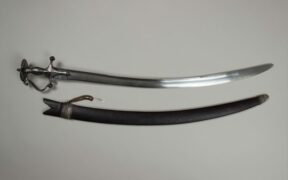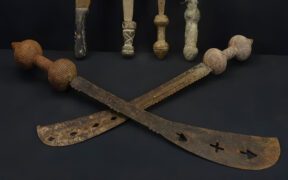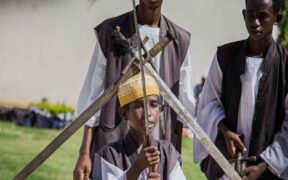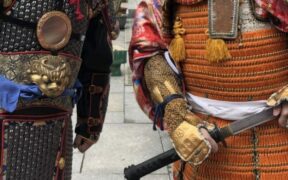Our content features commercial links to our products, committed to transparent, unbiased, and informed editorial recommendations. Learn More
The Kris Sword: A Masterpiece of Southeast Asian Craftsmanship
NO AI USED This Article has been written and edited by our team with no help of the AI
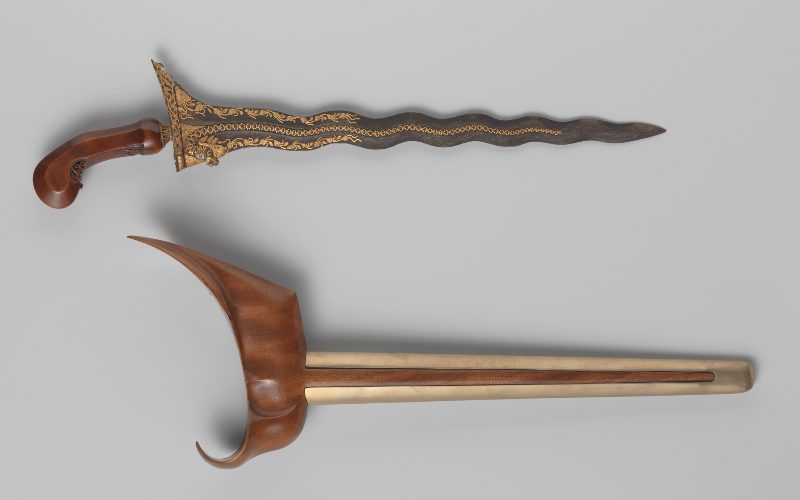
Known for its distinct wavy blade and intricate hilt designs, this traditional weapon has captivated the hearts of many for centuries. In this article, we will delve into the fascinating world of the Kris sword, exploring its various variations such as Kris daggers and Moro Kris swords, and uncovering the significance they hold in the cultural heritage of Southeast Asia.”
Two Types of Kris Swords
Both the ‘Kris’ or ‘Keris’ dagger and ‘Moro Kris’ or ‘ Kalis’ swords have exceptionally similar names, heritage and design. They are symbolic weapons of Southeast Asia, sharing one of the most eye-catching and unique blade shapes for a
The simple difference between the Moro Kris
We will explore how the Moro Kris became a
Type 1: The Kris Dagger
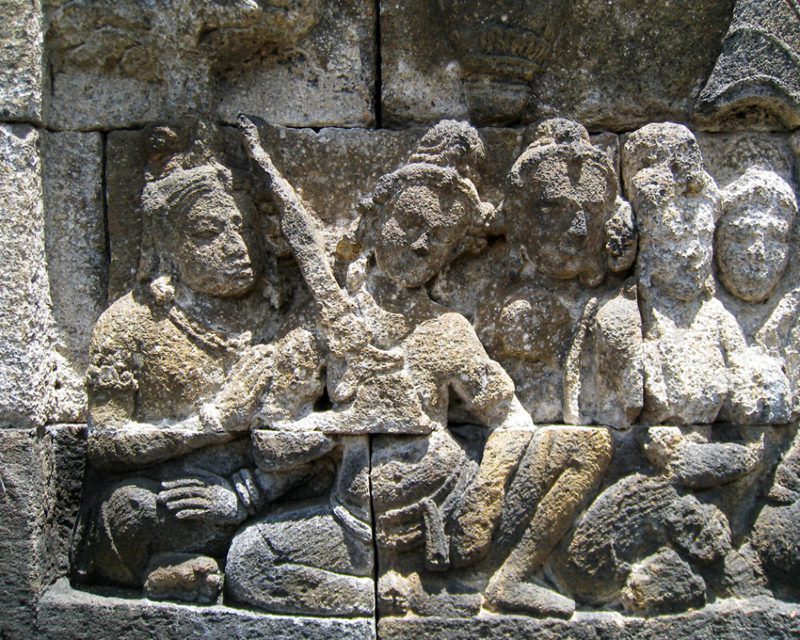
The Kris dagger predates the Moro Kris
The Kris is generally considered the Western terminology for the
Although it is hard to place exactly when the Keris first came into existence, historians have suggested that they could have been in use from as early as the 9th century. They have attained this information from the sculpture and bas-relief of temples in Indonesia, such as the Mahayana Buddhist temple Borobudur in central Java, on which Kris daggers have been carved and depicted.
They are possibly one of the most widespread swords in terms of popularity and have become staples in the weaponry of Southeast Asia. These countries include the islands of Indonesia, Southern Thailand, Malaysia, Brunei, and the Philippines, with variations of the Kris often developing in each location. Note that the all-famous Malay Kris is the Malaysian version of the kris dagger.
Like the Katanas of the Samurai, the production of each element of a Kris or Kalis is seen to be an artform:
Blade

The most distinctive and arguably outstanding part of the Kris knife’s design is the asymmetrical “wavy blade”. Before developing into the Moro Kris Shortsword, the older, asymmetrical dagger would have been carried almost constantly by the Javenese into battle, for everyday protection, and as a ceremonial and spiritual object. The most distinctive of these double-edged knives could have up to 29 undulations on its trademark wavy blade, which would be between 25-38cm long.
It is said the undulations are one of its most ferocious characteristics, given that a flamberge blade (a
The number of “waves”, or undulations, are known as “luk” on a Kris dagger. They should always be an odd number and can range anywhere between 3 and 29. It is believed that the greater number of waves represents the higher status of the Kris’s owner and the greater spiritual power the Kris held as a talisman. The curves themselves are symbolic of a snake or a dragon.
It is not to be forgotten that more than half of the Kris swords were straight for practical reasons, and a warrior’s blade would usually only have 3 curves. Therefore, the spiritual and status related aspects were the more likely reasons for an extensively wavy blade.
Guard / Gangya
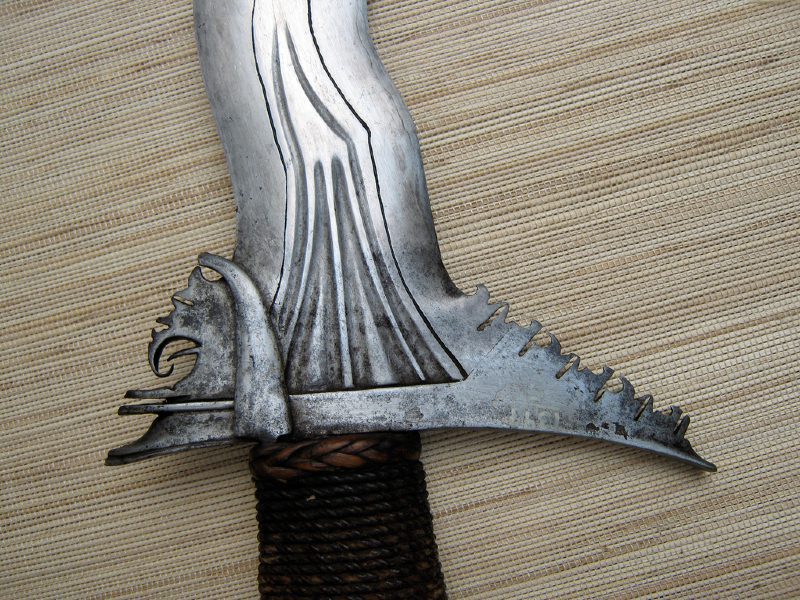
Given the striking nature of a blade that has many luk, the base of the Kris, also known as the guard or gangya, is potentially overlooked. It could be argued that the hand guards on these daggers and swords might deserve to be considered as the more uniting design feature between the Kris daggers and Moro Kris Swords.
As previously mentioned, it is known that some Kris daggers and Moro Swords would have been straight bladed. The majority of these blades would also usually have a uniquely curved and ornate guard, designed to protect the yielder’s hand in combat.
As you can see in the picture, the wide base is asymmetrical. The gangya extends and curves out, possibly reminiscent of an elephant trunk, and has vicious “teeth” which would stop an opposing blade’s attempt to slice at the fingers below it. The rest of its design is also often elaborate, tying in with the design of the wavy blade.
Hilt
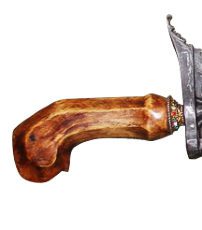
Like the rest of the blade, the hilt and pommel are equally considered in the Kris’s design and forging process. Hardwood, bronze and ivory can be used for the hilt, often in combination with rattan or other design features. The hilt of a Kris blade is another way to determine how it may have been utilized.
Generally speaking, a Kris with an ergonomic hardwood handle may be more likely to be used in combat, whilst a decorative and elaborate hilt might be more likely to be used in ceremony or as a talisman. The comfort and excellent grip given by a Kris hilt is often one of the key design highlights of the
Scabbard / Warangka
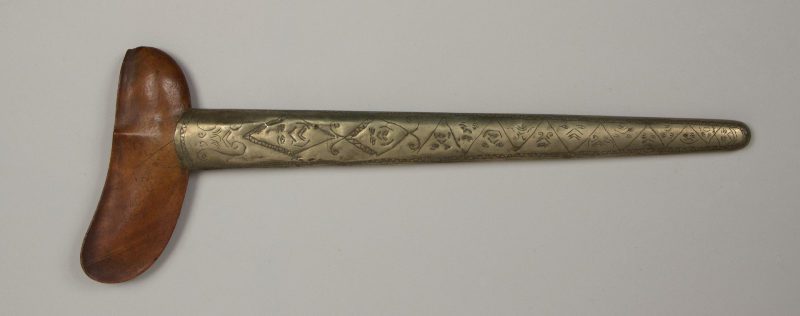
The warangka, otherwise known as a scabbard, is the sheath that protects the blade of a Kris and its architecture is just as important. The main section of the warangka that protects the blade is most commonly made from hardwood, but often designed with embellishments in mind. From precious metals and ivory to jewels and gemstones, the warangka was the final artistic flourish in the making of a Keris blade.
Each material used in the making of the warangka is important since different woods and metals are believed to harbor individual powers. This in turn, adds to the total spiritual power held by the Kris once it is completed. The colors used in the Scabbard can also be an indicator of the status of its owner, such as green for ministers and red for the Sultan.
Pamor

Finally, the pamor refers to the pattern in the blade which occurs as a result of the forging process and is just as precise as the rest of the design.
Pamor comes from the Javanese word for mixture, which relates to the method of “pattern welding” where the blade of the Kris is made by mixing metals. By heating, pounding, and folding them together whilst they are red hot, the pamor pattern is achieved.
The metals used can be different combinations of iron ore, nickel, titanium, and steel.
Top tip: The Indonesian term for a Kris swordsmith is an Empu, and they are highly respected craftsmen in their cultures. So when you’re on the hunt for your own Kris
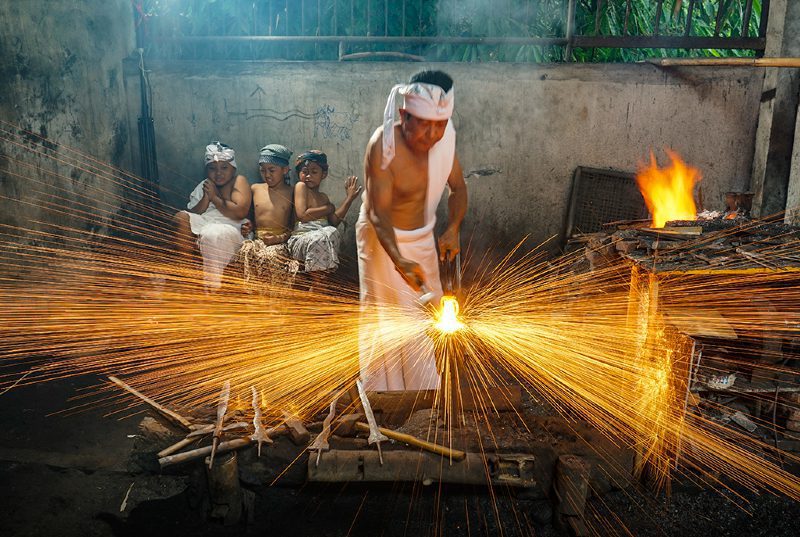
Type 2: Moro Kris Swords
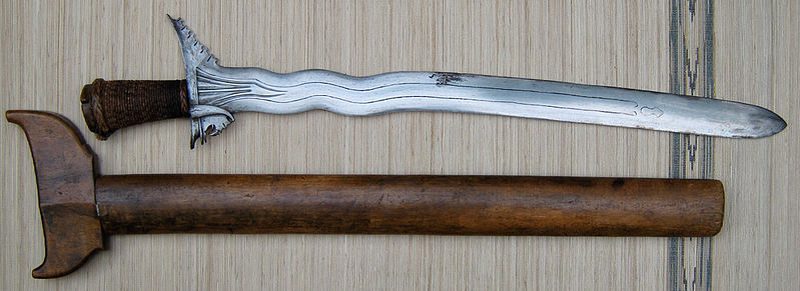
At this point, you may be wondering where the differences lie between the Kris/Keris dagger and the Moro Kris / Kalis
Ultimately, the main difference between both is that one is a dagger and the other is a
Origins & History
The shortsword, with its extended blade length, takes its name from the Moro people of the Southern Philippines. Although the Kris or Keris dagger is a significant part of the culture of many Southeast nations, the Moro Kris
They are people of the Islamic faith, a factor that can be attributed to their ostracisation and neglect within the Filipino governing system throughout history. This is also potentially a key reason for the development of the Kris dagger into a
As the Roman-Catholic Spaniards tried to colonize the Philippines between the 16th and 19th centuries, the Islamic Moro resisted. It is suggested that it was during this time that they developed the Kris dagger into the Moro Kris
The Kris
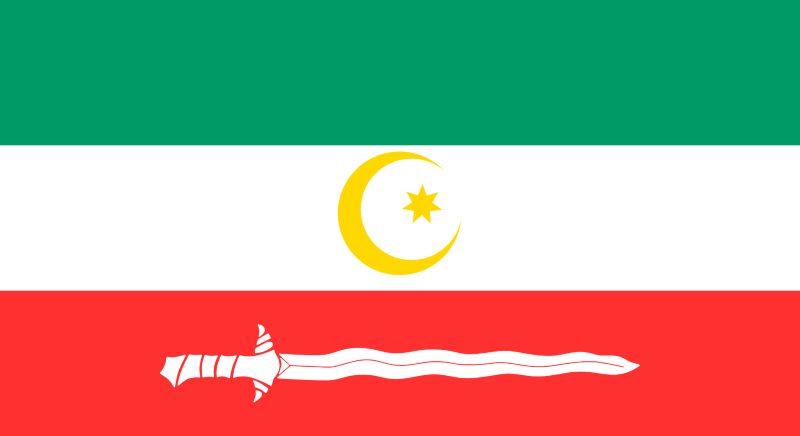
Kris Dagger vs Moro Kris: Key Differences and Similarities
To avoid confusion as much as possible, let us briefly summarize the differences between the Kris/Keris dagger and Moro Kris/ Kalis
- The Kris dagger is a shorter, knife-like blade while the Moro Kris
sword is a longer, shortsword that ranges between 46 and 66cm long
- The Kris/Keris/Creese etc originates from Java, and its popularity spread across Southeast Asia. Meanwhile, the Moro Kris/Kalis
sword also has Indonesian roots, but the Moro tribe warriors evolved it from a backup weapon into a primarysword .
- The Indonesian Kris seems to be more deep rooted in its spiritual past, whilst the Filipino Kalis appears to have developed into more of a symbol of battle.
- The Kris dagger tends to have a more elaborate hilt, but the Moro Kris
sword is still meticulously designed and often finished with a horse hoof pomme.
- Both blades can be wavy or straight, with many or no undulations and the exquisite, curved gangya is found at the base of both weapons.
Factors To Consider When Choosing A Kris
Of course, when buying more unique styles of swords and daggers, there are certain factors to consider:
- Where to find one. As the Kris blades are still such a fundamental and sacred part of Southeast Asian culture, you can still find traditional Kris swords being made in recent times. If you are a
sword collector, this is incredibly exciting as it means that you might not have to settle for a replica.
- Maintenance. One of the key things to remember, especially if you intend to use your Kris dagger or Moro Kris
Sword , is that a wavy blade requires a lot more effort in terms of upkeep. They are harder to sharpen and harder to sheath.
- Expense. Although a higher number of undulations gives your Kris a greater status symbol, this will come at a price. The more waves, the more effort required in its forging process and therefore, the pricier it will be.
- Heritage. It is easy to focus on a
sword like this purely as a weapon, but it is important to keep in mind the emblem of spirituality that the Kris and Kalis blades have in many Southeast Asian cultures.
- Type. Remember that since the Kris daggers and swords are weapons used in many nations you may find a range of variations. For example you might find a “Malay Kris” which indicates its Malaysian origins or you might be more drawn to the Moro Kris, which heralds from the Philippines. Take your time and pick your favorite!
Spiritual Heritage
We have already alluded to the spiritual significance the Kris blades represent in Southeast Asian cultures. Everything to do with design, the forging process, who it is to be carried by, and what it will be used for helps to shape the finished
There are many beliefs and practices attached to the Keris, but ultimately they are thought to harbor magical powers, or even be the resident object of a guardian spirit whose job is to keep its owner safe. Stories tell of water being drawn from the end of a Kris dagger, enemies being hurt by simply thrusting the blade into their footprints, and fire being transferred from a burning ship to shore just by pointing the weapon.
In order to retain the powers, the Keris is traditionally cleansed with a halved lime, and rinsed with water to remove dirt and rust. This ritual is performed with great importance.
Returning to the pamor forging process, the length of time spent forging these blades also affected the power of the talisman. The empu who made the blade could spend from weeks to years forging the blade. It has even been said that the best empus might go into a trance when welding, giving them the ability to handle the red hot metal with their bare hands.
Still in use today, the Kris is often passed down as an heirloom within families. With each passing generation, the Kris’s power should be respected and tended to. They are worn on special occasions and in ceremonies such as weddings and other events.
The Martial Art of Silat
With over 1000 variations, the Southeast Asian Martial Art of Silat may be the reason you are looking to find your own Kris blade. Silat dates back to the same time that the Keris dagger was born. It is a martial art which includes the use of the Kris dagger to help you counter attacks with your blade.
Silat is still practiced today across Malaysia, Thailand, Indonesia and the Philippines and the discipline has now begun to gain popularity in the West. An ancient practice carried on throughout the centuries, it indicates the significance of the Kris dagger and Moro Kris
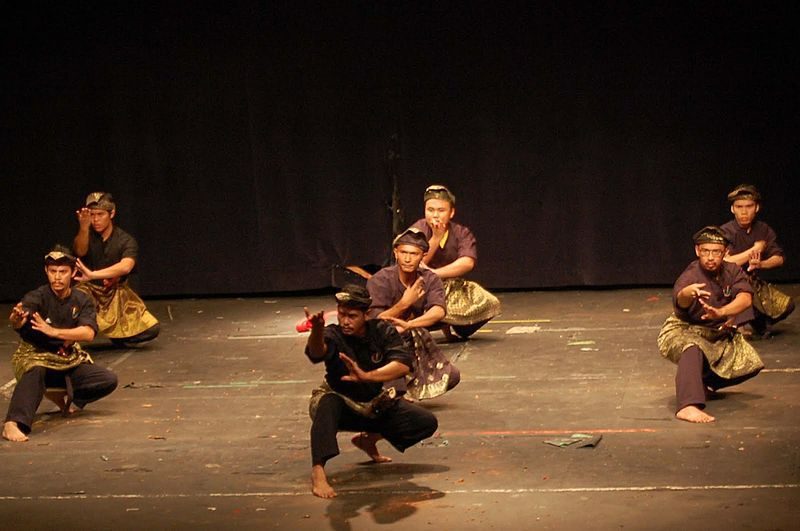
Conclusion
The heritage and design of the Kris dagger and Moro Kris
